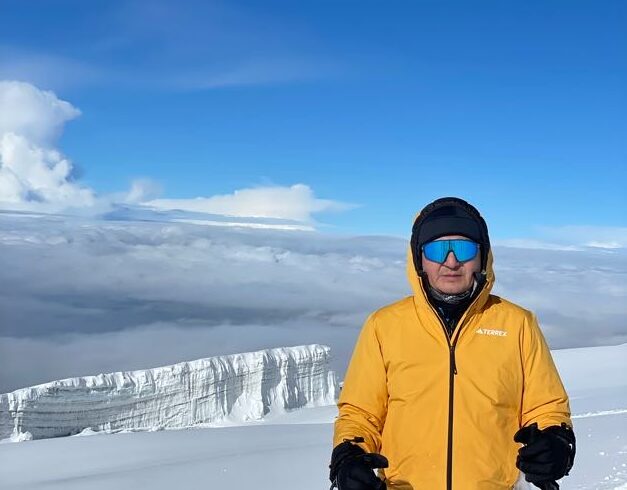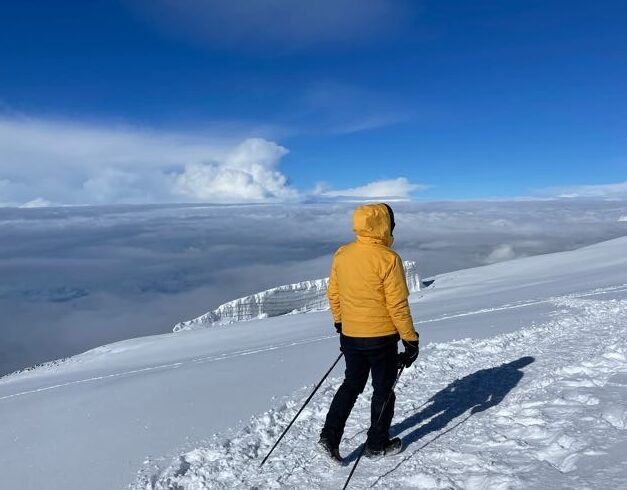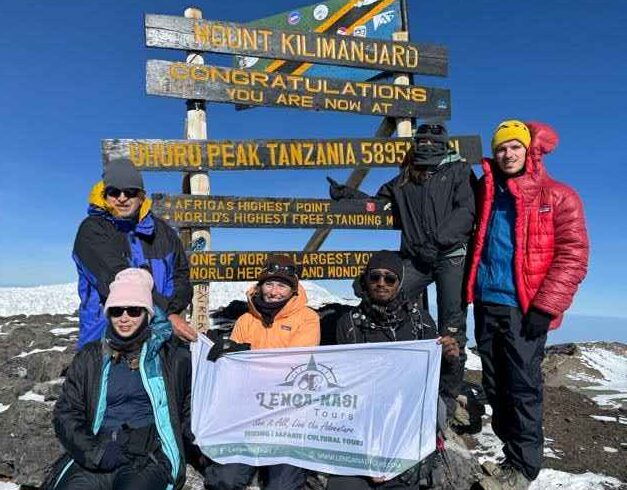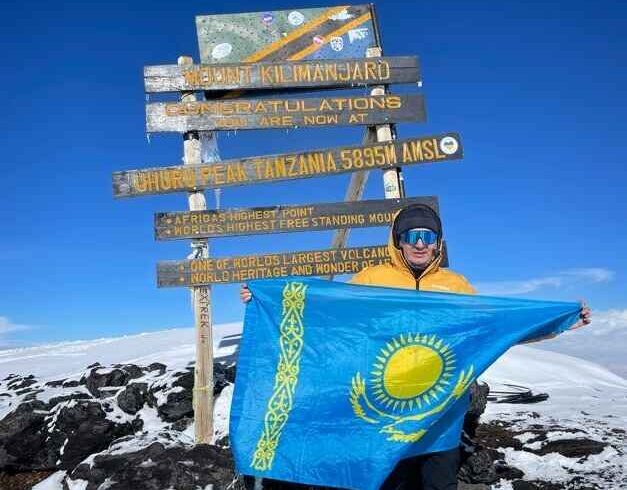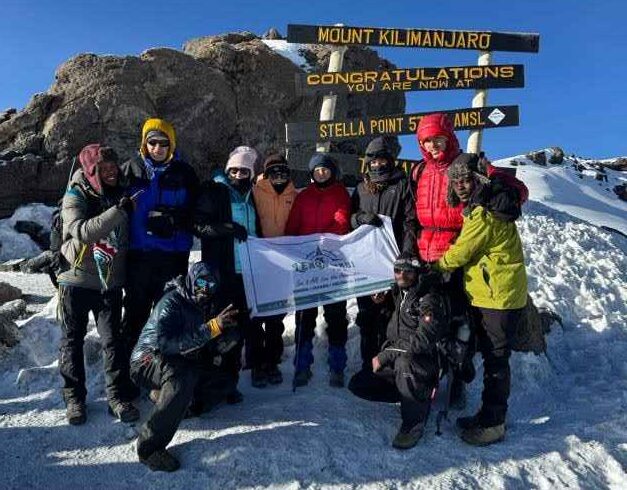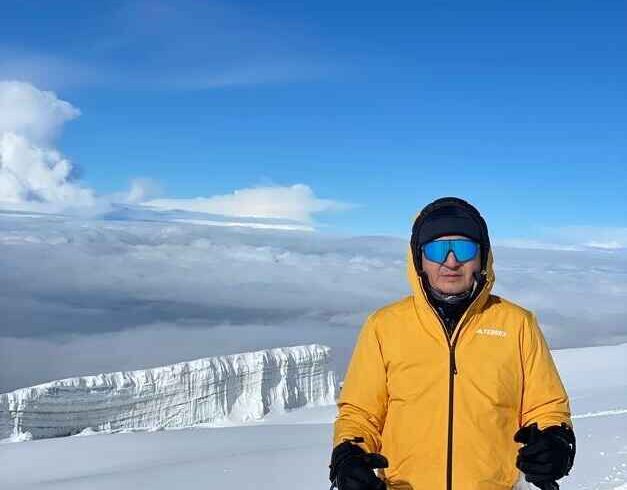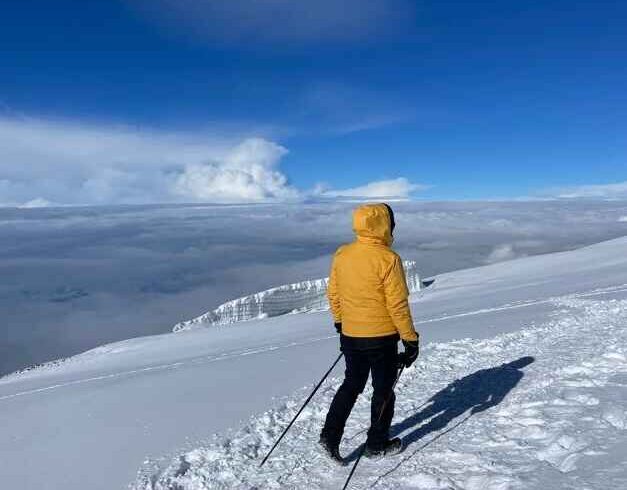Hiking and Trekking in Tanzania
Experience Tanzania’s highest mountains and remotest areas on foot
Kilimanjaro Trekking Tours
For many adventurers, reaching the summit of Mount Kilimanjaro is a dream come true. The trek offers a unique opportunity to explore diverse landscapes while scaling Africa’s tallest mountain. Known for its breathtaking views, Kilimanjaro is one of the most beautiful trekking destinations in the world. From the summit, you’ll be treated to stunning panoramas of Kenya and Tanzania, creating memories that will last a lifetime.
The best part? You don’t need to be an expert climber to conquer Kilimanjaro. With the right physical fitness and determination, anyone can complete this remarkable journey. There are various routes to suit all skill levels, and we can help you choose the ideal one. Our experienced mountain team is dedicated to your safety, guiding you to the summit and ensuring a safe return.
When it comes to trekking Kilimanjaro, you can choose between a private trek or a group climb.
Private Trek: This option gives you flexibility in choosing your trek dates and companions. Whether you’re traveling with friends or as part of a club or charity group, you can share the costs, making it more affordable.
Group Trek: If you’re a solo traveler or a couple, you can join a scheduled group trek with a maximum of ten participants.
Whichever option you choose, a professional guide will lead your trek, porters will handle your gear and set up camp, and our skilled chefs will prepare delicious meals every day. Accommodation will vary: on the Marangu route, you’ll stay in shared huts, while other routes provide private two-person tents
We specialize in treks along four main routes on Mount Kilimanjaro:
Eastern Marangu Route: A six-day trek, available as a private or group trek.
Northern Rongai Route: A six-day private trek.
Southern Machame Route: A six-day trek (seven days including acclimatization), available as a private or group trek.
Western Lemosho Route: A seven-day trek (eight days including acclimatization), available as a private or group trek.
If you’re interested in other routes, feel free to contact us for more options!
To improve your chances of reaching the summit, we recommend adding an extra night to your trek on the Machame and Lemosho routes. This strategy, known as “climb high, sleep low,” is commonly used by seasoned trekkers to help your body adjust to higher altitudes. On the acclimatization day, you’ll hike to a higher elevation, then descend several hundred meters before spending the night at a lower camp, giving your body more time to adapt.
Mountain Huts and Private Tents
There are several accommodation options in the towns south of Mount Kilimanjaro, including hotels and guesthouses. Depending on the route you choose, your accommodation during the trek will vary between two options:
Shared Huts
On the Eastern Marangu route, you will stay in shared wooden huts that fit four to six people. These huts are assigned on a first-come, first-served basis, meaning the earlier you arrive, the more likely you are to get your preferred hut. The huts have electric lighting, mattresses, and basic toilets, but they are not heated. Each camp on this route also features a main building where meals are served.
Private Tents
If you are trekking the Machame, Lemosho, or Rongai routes, we provide you with a high-quality, two-person tent and sleeping mattress for your private use. Additionally, you can rent a warm sleeping bag from us, rated to handle temperatures as low as -12°C, or bring your own if preferred.
Showers and Toilets
For group treks, the toilet facilities are very basic and shared. On private treks, we set up a mobile toilet tent at each campsite for your convenience. Please note that there are no showers on any of the routes. However, we provide warm water in a bowl for a wash, both on group and private treks.
Quality Equipment
We supply high-quality equipment. You can even rent personal equipment from us.
Experienced Mountain Guides
They bring you to the top and safely back down again.
Group & Private Trips
Join a group climb or travel with your friends and family only.
Essentials for Your Kilimanjaro Climb
Here is a list of essentials you’ll need for your Kilimanjaro trek. Most items can be purchased or rented in Moshi, with rental costs ranging from USD 100 to 200 depending on the items.
Towel
Soap
Hand sanitizer
Camera
Toothbrush
Spare batteries for camera and headlamp
Face cloth
Toilet paper
Down jacket
Summit pant
Fleece jacket
Fleece gloves or thermal glove liners (for use with waterproof mittens)
Gaiters
Fleece or thermal balaclava
Thermal top (at least 2 for summit day)
Thermal long johns (at least 2 for summit day)
Thermal socks
Warm pants (to wear over summit outer pants before reaching the summit)
Sunglasses with UV protection
Head torch
Rain gear (poncho or rain jacket and rain trousers)
Rain cover for bags
Hiking boots or cross trainers
Shorts
Tracksuit pants
T-shirts
Sun hat (peak caps don’t offer enough protection)
Woolen socks
Fleece beanie
Waterproof day pack (20L to 40L, carried by you)
Waterproof duffel bag or waterproof backpack (60L to 100L, carried by the porter, max 15kgs)
A small lock for your duffel bag
Walking stick (adjustable)
Sleeping bag (comfort rating of -5°C)
At least 3-liter water bottle
1-liter thermal flask
Malaria prevention
Altitude sickness
Headaches
Nausea
Cold and flu
Muscle sprains
Meal supplements (protein bars, energy bars, granola bars, powders)
Salty snacks (trail mix, nuts, pretzels, jerky, Pringles)
Sweet snacks (hard candy, chocolate bars, dried fruit, M&Ms)
Energy snacks (sports gels, energy gels, Sport Beans)
Electrolytes (Gatorade packets, Nuun tablets, GU hydration tablets)
Accommodations
Tanzania offers a range of incredible places to stay.
Day treks are concentrated around the northeastern city of Arusha and the town of Moshi, where you can find hotels, guesthouses, and lodges in nature. From here, you can enjoy a guided walking safari through Arusha National Park to get up close to the wildlife. Or you may prefer to relish the easy-paced Shira Plateau trek to climb Mount Kilimanjaro’s lowest and oldest peak.
On multi-day mountain treks, you stay overnight in shared huts on Mount Meru and Mount Kilimanjaro’s Marangu route. If you prefer to climb any of Kilimanjaro’s other three routes, private two-person tents are set up by our dedicated mountain teams before you arrive at each campsite.
Frequently Asked Questions
What to Expect on a Kilimanjaro Climb?
Before you begin your trek, our Trekking Operations Manager will provide a detailed briefing about the route, safety protocols, and health matters. You’ll also have a chance to ask any questions. Additionally, your trekking gear will be checked for quality to ensure your safety and comfort. If you need any additional equipment, we offer rentals.
During the trek, you’ll carry a small daypack with essentials like water for your hike. Our porters will carry all your equipment, food, and extra luggage to set up camp before you arrive. They are experienced climbers and truly the heroes of the mountain.
Your mountain guide will lead the way and ensure your safety. These guides are experts with extensive experience on Kilimanjaro and undergo regular training. They will monitor your progress and make adjustments if necessary. If weather conditions or health issues like altitude sickness arise, they will prioritize safety and may decide to turn back.
Our cooks are experts at preparing nourishing meals, offering three-course meals, hot drinks, and snacks to keep you energized. The water is collected from mountain streams, boiled, and purified for your safety.
At the camps, our porters will set up and take down your two-person tents, so you can focus on reaching the summit. We regularly inspect and clean our camping gear.
Which Routes Can I Take on Mount Kilimanjaro?
We offer four routes to climb Kilimanjaro, each with its unique features:
- Marangu Route: This route on the mountain’s eastern side is one of the easier ascents. It’s the only route with overnight stays in shared huts.
- Rongai Route: Starting on the north side, this route offers great views with fewer climbers. After reaching the summit, you’ll descend via the Marangu route. It’s considered an easier path.
- Machame Route: Known for its steeper sections, this route is more challenging but offers fantastic views of Kilimanjaro’s three peaks. The descent follows the Mweka route.
- Lemosho Route: This less-traveled trail starts on the western side of the mountain. On day three, it joins the Machame route to reach the summit. It’s similar in difficulty to the Machame route.
What Does a Typical Day on Mount Kilimanjaro Look Like?
On day one, after breakfast, we’ll drive you to the Kilimanjaro National Park entrance where your guide will handle the registration and park fees. You’ll then start trekking through lush forests, reaching your first campsite after five to six hours. You’ll enjoy a delicious dinner before resting for your first night on the mountain.
Each day begins with a hearty breakfast. You’ll start trekking shortly after, stopping for lunch with scenic views along the way. Expect to hike five to seven hours each day over the next few days. On summit night, you’ll start at midnight for a five to six-hour final push to the top to catch the sunrise. After taking in the incredible views, you’ll begin the descent for another five to six hours of hiking. This will be the longest, but most memorable, day of the trek.
On the final day, you’ll have your last breakfast on the mountain, followed by a traditional farewell ceremony to thank your mountain crew. Afterward, you’ll descend and drive back to your lodge to relax and celebrate your success.
When is the Best Time to Climb Mount Kilimanjaro?
The best time to climb Kilimanjaro is during the dry season, from July to October, when the weather is typically clear and ideal for trekking. However, the weather on the mountain can change quickly, and you may experience all four seasons in one day. It’s common for temperatures to drop significantly in the mornings and evenings, so it’s important to pack warm clothing.
Tanzania has two rainy seasons: long rains (from March to May) and short rains (from November to December). While the peak climbing season is from July to October, the shoulder seasons (late May to June and December to mid-March) offer good weather with fewer climbers, and they’re great for combining your trek with a safari.
Please note that climbing conditions may be unsafe during the rainy seasons, particularly in April, May, and November.
How Fit Do I Need to Be to Climb Kilimanjaro?
While no technical climbing skills are needed to summit Kilimanjaro, the trek is physically demanding and requires good health and fitness. You should be comfortable trekking for five to seven hours a day, with extra endurance for a 12- to 14-hour day on summit day. Mental toughness and determination are key to reaching the top. Altitude sickness can be an issue for some trekkers, but adding an extra acclimatization day can greatly improve your chances of success.
Other Things to Know Before You Go
Combine a Trek, Safari, and Beach Retreat: Many trekkers combine their Kilimanjaro adventure with a safari or a relaxing beach retreat. Get in touch with our team for personalized package suggestions.
Planning Guides: After booking your trek, we will send you detailed pre-departure information, including a comprehensive packing list to help you prepare.
Tipping the Mountain Crew: Our guides, porters, cooks, and other staff are crucial to your Kilimanjaro experience. If you feel they’ve provided excellent service, tipping is greatly appreciated. We will provide specific guidelines on how much to tip, when, and how to do it.
Emergency Services: Mountain rescue services in Tanzania are not as advanced as in other regions, and evacuations are typically done via wheeled stretcher as helicopters cannot reach higher altitudes. Be sure to have comprehensive travel insurance, including rescue and repatriation coverage.
Age Restrictions: Children under 10 are limited to hiking only as far as Shira Camp due to the risk of altitude sickness. We recommend a minimum age of 14 to 16 for most trekkers. Older trekkers should undergo a thorough medical check-up before attempting the climb.


